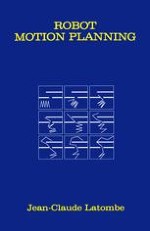1991 | OriginalPaper | Chapter
Potential Field Methods
Author : Jean-Claude Latombe
Published in: Robot Motion Planning
Publisher: Springer US
Included in: Professional Book Archive
Activate our intelligent search to find suitable subject content or patents.
Select sections of text to find matching patents with Artificial Intelligence. powered by
Select sections of text to find additional relevant content using AI-assisted search. powered by
The planning methods described in the previous three chapters aim at capturing the global connectivity of the robot’s free space into a condensed graph that is subsequently searched for a path. The approach presented in this chapter proceeds from a different idea. It treats the robot represented as a point in configuration space as a particle under the influence of an artificial potential field U whose local variations are expected to reflect the “structure” of the free space. The potential function is typically (but not necessarily) defined over free space as the sum of an attractive potential pulling the robot toward the goal configuration and a repulsive potential pushing the robot away from the obstacles. Motion planning is performed in an iterative fashion. At each iteration, the artificial force $$ \vec{F}(q) = - \vec{\nabla }U(q) $$ induced by the potential function at the current configuration is regarded as the most promising direction of motion, and path generation proceeds along this direction by some increment.
